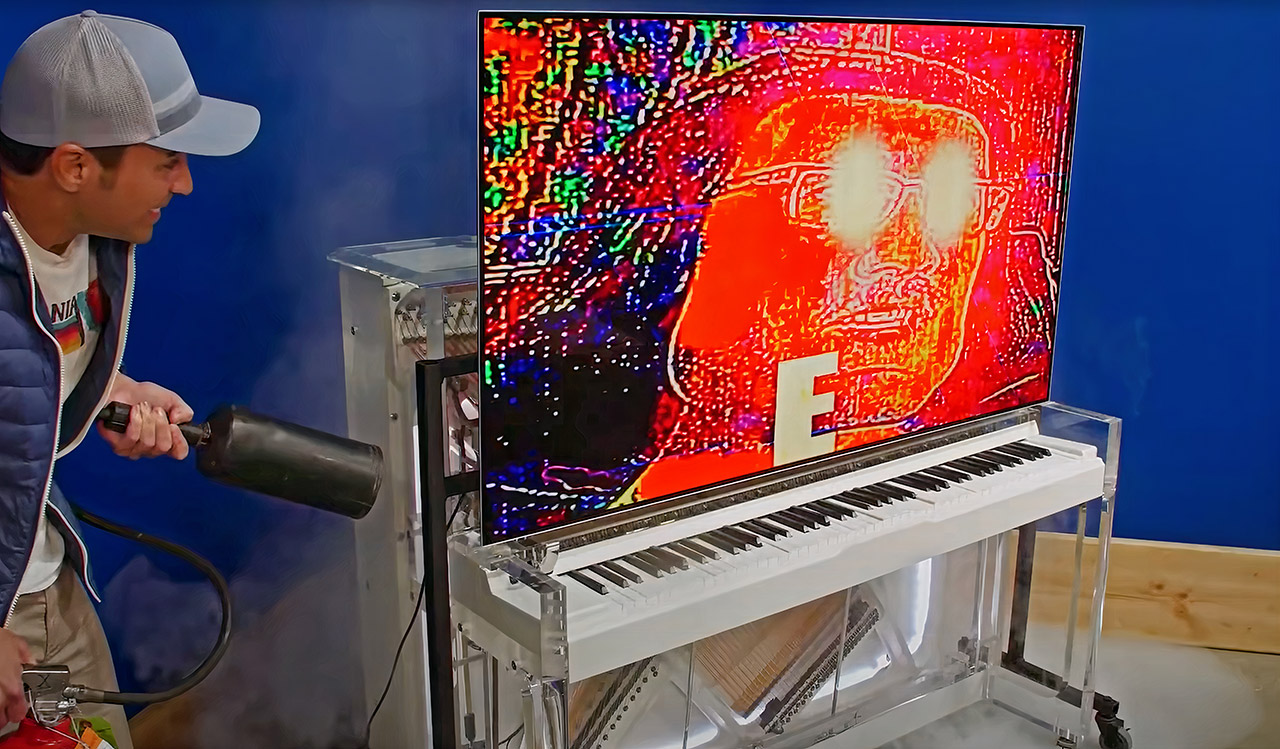
Mark Rober took his 7-years experience working on the Curiosity rover at NASA’s Jet Propulsion Laboratory and used it to build a smart talking piano that can not only talk, but also play some of the world’s toughest songs. Called Chopstix, this transparent piano is capable of playing Rush E and all the keys at once, thanks to a solenoid to actuate the keys. These solenoids are located at the bottom of each key so when the rod extends, it mimics the motion of someone actually playing.
Using the 88 solenoids, you’re also able to determine the amount of force required to be exerted on a key. Yes, it can also speak in English, thanks in part to a MIDI controller and Fourier transformer. These songs may not sound as crisp as the original because Chopstix doesn’t strike each string with full force, thus enabling it to recreate the dynamics of a human playing piano.
- Powerhouse performance from AMD Ryzen 5 5500U mobile processor, 8GB DDR4 RAM, 256GB SSD storage, and AMD Radeon 7 Graphics
- The IdeaPad 3 14-inch laptop has 4-side narrow bezels that let you see more of the FHD (1920 x 1080) screen for wider viewing angles and less clutter
- Quieter and cooler with intelligent thermals, plus you can calibrate performance with Q-control, with 3 modes to match your performance needs
If you zoom in on a little window of it you might notice it looks like a rhythmic repeating pattern. As it happens, one of the most delightful facts from math tells us that for pretty much any signal you can express it as a sum of pure sine waves, which, in the context of sounds, correspond to pure pitches. Higher frequency sine waves give you higher pitches,” said Rober.





